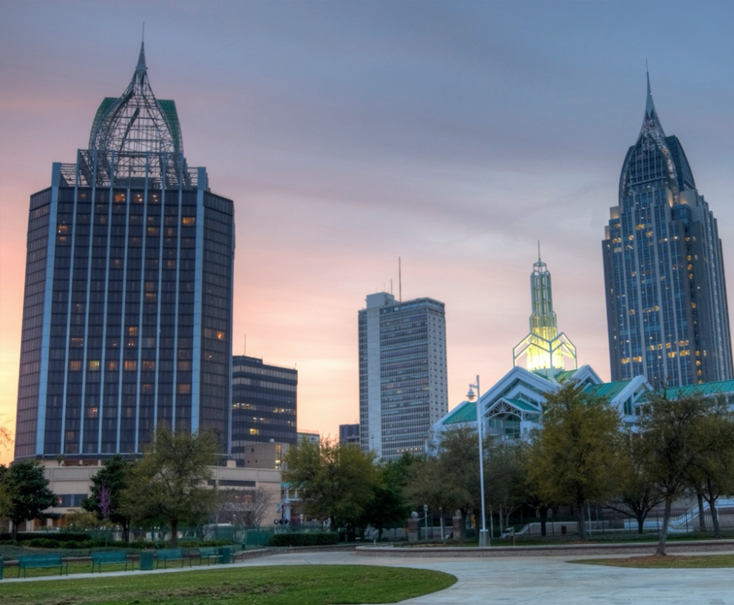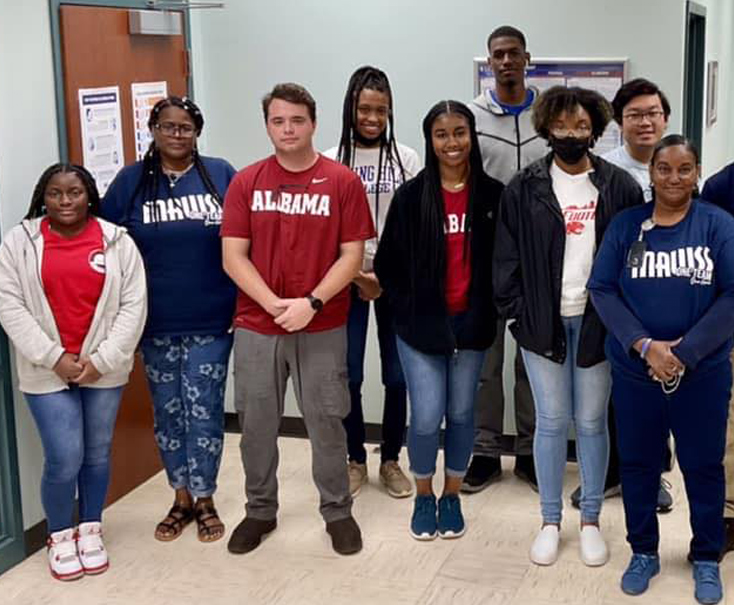Protect Big Creek Lake!
Wash Your Boat to Stop Aquatic Hitchhikers.
Aquatic Invasive Species (AIS) are living organisms existing inside an environment where the species does not naturally occur in the ecosystem. These organisms can be found within marine waters, estuaries and inland locations. AIS negatively affects the quality of life and biodiversity of the indigenous environment in which it exists. Furthermore, these nuisances have the capacity to cause damage to the health of the environment and the economy. These invasive species interfere with outdoor recreational experiences and can have a long-lasting adverse effect on routine life.
Giant Salvinia is an AIS that disrupted the waters of Big Creek Lake in 2021. Big Creek Lake is a man-made reservoir, constructed in 1952, that holds 17 billion gallons of drinking water for our community. The lake is consistently filled with water from local creeks, streams and groundwater in Mobile County. This watershed is a critical feature of our water system and it must be protected. Giant Salvinia is a free-floating aquatic plant native to Brazil. Its leaves float on the surface of the water with submerged root structures. This plant grows in clusters developing into dense floating mats that can double in size within four to ten days, making it a threatening invader. These mats can deplete oxygen needed for native wildlife and restrict natural sunlight penetration. Overall, this plant provides no value in our local ecosystem and is considered a highly undesirable species.
AIS like Giant Salvinia creates havoc amongst local environments, hindering wildlife conservation efforts, recreational activities and the economic values of communities that rely on active lakes, rivers, estuaries and oceans to be sustained. AIS compromises America's legacy by altering the use of our waters. For example, fundamental disruptions of these natural habitats can cause interference in the areas accommodated for human recreational activities and more. Breeding areas can become limited— forcing inhabitants into areas that are typically inhospitable or hostile. Across the nation, these nuisances cause tremendous economical damage each year.
However, Mobile Area Water and Sewer System has been busy establishing a working method to protect Big Creek Lake. A new boat wash at Fox Landing at Big Creek Lake was designed with the intent to minimize the spread of AIS with a communal, cooperative effort to reach the best results to protect our aquatic resources and opportunities. The boat wash will serve as a stopping point for boating enthusiasts to clean, drain and dry their boats when entering and exiting water access to aid in MAWSS’ efforts to stop aquatic hitchhikers.
Natural resource agencies and the boating industry have a shared responsibility and objective of getting boaters out to appreciate and enjoy waters across our nation. Boating activities are being jeopardized by the distribution of AIS. These species, establishing themselves in our waters, restrict natural resource opportunities. For example, plants and wildlife struggle to thrive as water quality deteriorates and fishing space becomes limited.
Boating activities are one way AIS are spread throughout bodies of water. Significant efforts are being made by essential partners to help boaters understand the necessity of the boat wash and how to intentionally stop the spread of these species.
It’s important to utilize this process to ensure no further distribution of AIS:
- CLEAN off evident aquatic life such as animals, plants and sludge from all boats and equipment used before and after exiting the water.
- Rinse all boat equipment and boat hulls with high-pressure water.
- Rinse the internal cavity of the boat with low-pressure water (120°F).
- Flush engine with hot water (120°F) for 2 minutes.
- DRAIN livewell, bilge, motor and all devices containing water before leaving the water.
- For ANGLERS, the additional step of DISPOSE is recommended:
- DISPOSE of unused bait, worms and fish parts in the trash. Never discard live fish or organisms from one body of water into another.
Together these steps substantially reduce the possibility of spreading AIS into other environments.



